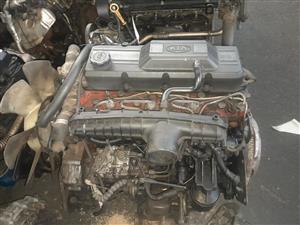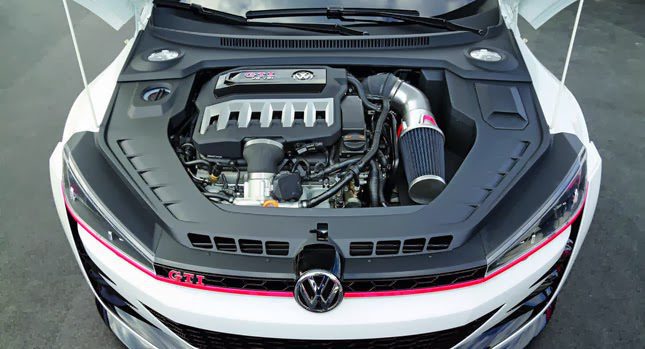Opel Corsa Engine: Performance and Reliability for Your Automobile
Opel Corsa Engine: Performance and Reliability for Your Automobile
Blog Article
Comprehensive Review of a Subcompact Automobile's Powertrain Capabilities
In the realm of vehicle design, the powertrain of a subcompact automobile stands as an important nexus where efficiency, performance, and innovation assemble. From the engine's unrelenting search of optimum efficiency to the transmission's smooth choreography of power circulation, every element plays a crucial role in specifying the overall driving experience.
Engine Efficiency Evaluation
In evaluating the engine efficiency of the subcompact car, a thorough analysis exposes its effectiveness and power result under different driving conditions. The subcompact automobile's engine, a vital component of its powertrain system, demonstrates good performance metrics. The engine's effectiveness is remarkable, as it maximizes fuel consumption without compromising power distribution. Under typical driving problems, the engine runs smoothly, showcasing an equilibrium in between performance and gas economy.
Furthermore, when based on extensive testing circumstances such as high-speed velocity or uphill climbs, the engine shows durability and responsiveness. Its power output remains constant, offering ample velocity when needed. The subcompact automobile's engine is tailored to meet the demands of metropolitan driving, where fast acceleration and active ability to move are vital.
In addition, the engine's design incorporates modern innovations that boost its efficiency characteristics. Features like turbocharging or variable valve timing contribute to enhanced power distribution and torque, boosting the total driving experience. To conclude, the engine efficiency of the subcompact cars and truck highlights its capability to supply reliable and dependable power output across different driving problems.
Transmission Effectiveness Analysis
Evaluating the subcompact vehicle's transmission effectiveness entails evaluating its performance in transferring power seamlessly across various driving problems. The efficiency of a transmission system is important as it directly impacts the general performance and gas economic situation of the car. In assessing transmission performance, variables such as gear ratios, shift timing, and the smoothness of equipment adjustments are taken into consideration. A well-designed transmission system should properly provide power from the engine to the wheels while minimizing power losses.
One typical method utilized to examine transmission performance is through dynamometer testing, where the power result from the engine is determined at the input and output shafts of the transmission. By assessing these aspects, engineers can determine areas for improvement and maximize the transmission system for much better general efficiency and performance.
Fuel Efficiency Exam
The evaluation of the subcompact auto's gas effectiveness involves a thorough analysis of its intake prices under different driving problems. Fuel efficiency is a crucial consider assessing the general performance and cost-effectiveness of a car. By gauging the amount of fuel eaten per unit range took a trip, commonly revealed as miles per gallon (MPG) or litres per 100 kilometers (L/100 km), the efficiency of the subcompact auto's powertrain can be established.

In addition, innovations in innovation, such as hybrid systems, regenerative braking, and automatic start-stop systems, have substantially enhanced gas effectiveness in contemporary subcompact automobiles. Suppliers remain to optimize and introduce powertrain parts to enhance gas performance while fulfilling performance needs and ecological guidelines. Assessing a subcompact auto's fuel efficiency gives valuable insights for consumers looking for lasting and economical transport solutions.
Acceleration and Handling Analysis
An essential element of examining the efficiency capabilities of a subcompact car lies in analyzing its velocity and managing features. Acceleration is essential as it determines how swiftly the car can get to desired rates, click for more impacting general driving experience and maneuverability in different web traffic conditions. opel corsa engine. Subcompact autos are commonly favored for their nimbleness and dexterity, making acceleration from dead stop and throughout surpassing maneuvers important aspects to think about
When it involves dealing with, a subcompact auto's ability to navigate corners, keep stability at high rates, and provide a receptive guiding feeling are critical. Limited city roads and winding roadways need accurate managing to make sure vehicle driver self-confidence and safety and security. Factors such as suspension adjusting, weight circulation, and tire grasp play significant roles in establishing a subcompact automobile's general handling prowess.

Powertrain Components Introduction
Upon delving into the ins and outs of a subcompact car's performance, an extensive exam of its powertrain components is vital to realize the lorry's mechanical underpinnings. The powertrain of a subcompact you can try this out car usually is composed of the engine, transmission, driveshaft, differential, and axles. Understanding just how these parts function together is crucial in evaluating a subcompact vehicle's general performance, effectiveness, and driving characteristics.
Conclusion
In final thought, the subcompact auto's powertrain capacities have been extensively examined in terms of engine performance, transmission efficiency, gas effectiveness, velocity, and handling. The thorough review highlights the significance of each part collaborating flawlessly to provide optimum efficiency. On the whole, the powertrain elements of the subcompact auto have been discovered to be healthy and reliable, making it a trustworthy option for vehicle drivers looking for a small and fuel-efficient car.
In the realm of vehicle design, the powertrain of a about his subcompact vehicle stands as an important nexus where performance, innovation, and efficiency converge.In evaluating the engine performance of the subcompact auto, a detailed analysis exposes its effectiveness and power output under various driving conditions.Analyzing the subcompact auto's transmission performance involves analyzing its efficiency in sending power effortlessly across various driving conditions. Understanding just how these parts function with each other is important in analyzing a subcompact automobile's total efficiency, effectiveness, and driving dynamics.In conclusion, the subcompact automobile's powertrain capacities have actually been extensively evaluated in terms of engine performance, transmission performance, fuel effectiveness, handling, and velocity.
Report this page